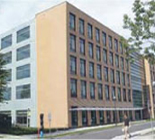The objectives of this multi-disciplinary team comprising biochemists, biophysicists, chemists, microbiologists, and molecular biologists are to collaborate to exploit every aspect of life sciences for:
- The identification of potential drug targets
- Assembly of natural product and synthetic libraries
- Novel high-throughput screening for inhibitors/modulators
- Analysis of biochemical and structural aspects of compound-target interactions
- Pharmacologic and genetic studies
- The elucidation of drug resistance mechanisms
These investigations are conceived with the objective of providing early-stage chemical agents for the treatment of a variety of disease-related pathologies including atherosclerosis, cancer, cardiovascular, immune and infectious diseases.
We aim to create a multidisciplinary team of UBC scientists capable of carrying out all aspects of drug discovery. The research group will enable the discovery of biologically active chemicals with applications in basic science and in medicine. Life scientists will use the chemicals as laboratory tools to uncover the roles of affected biological pathways at a variety of different levels, ranging from molecular to cellular to organismal. Medical scientists will discover and design chemicals with biological and pharmacological properties necessary for their development into therapeutic agents. Chemists, biochemists, and biophysicists will devise and apply proteomic and structural approaches to identify the target proteins whose activities are modulated by the chemicals and to determine their mechanism of action.
The Biological Screening Unit in the LSC will house high-throughput robotic systems essential to screen libraries of pure chemicals and of natural extracts, including devices to dispense cells, reagents, and small molecules into multi-well plates, and a suite of instruments for the automated detection of biological activity through a range of in vivo and in vitro assays. DDTI researchers will use the Chemistry Unit, located in the nearby Department of Chemistry, to generate chemical libraries with equipment for the automated combinatorial synthesis of peptides and organic molecules. This unit will also be responsible for the isolation and identification of active chemicals, as well as for the synthesis and optimization of active second generation chemicals for subsequent biological studies. The Target Identification Unit will be in the new Michael Smith Building, adjacent to the LSC. It will house mass spectrometers and other proteomic instrumentation needed to carry out the identification of proteins whose activities are modulated by the chemicals and to study the effects of these chemicals at the molecular, cellular, and organismal levels. The LSC will also house the X-ray crystallographic and NMR spectroscopic equipment needed for structural characterization of chemicals bound to their target proteins.
The strength of this proposal lies in the integration of world-class UBC chemists and biologists into a team that covers every aspect of CBDD, including the provision and synthesis of chemical libraries, the development of innovative and powerful screening assays, the chemical optimization of selected molecules, the analysis of the mechanistic bases for the biological effects of active chemicals, and the discovery of novel drugs and drug targets. The CBDD scientists will also provide their expertise to other academic and industrial researchers wishing to apply aspects of drug discovery to their own research fields. This stimulating learning environment, enhanced by the provision of formal training courses and seminars, will produce a pool of highly qualified personnel with the multi-disciplinary skills required for academic and industrial careers.The CBDD group has tremendous potential to create new knowledge and enhance research productivity.


